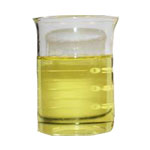There are many practical uses for used motor oil. A primary use is to re-refine it into a base stock for lubricating oil. This process is very similar to the refining of crude oil. The result is that the re-refined oil is of as high a quality as a virgin oil product.
A secondary use of the fuel oil (residue after re-refining) is to burn it for energy. Large industrial boilers can efficiently burn the fuel oil with minimum pollution. As a result some fuel oil is sent to power plants or cement kilns to be burned as fuel. On a smaller scale small quantities of fuel oil are burned in specially designed heaters to provide space heating for small businesses.
NFE's products mainly constitute Group I base oil products. These include base oils which are commonly identified as SN 150 and SN 500 which are readily traded in the world market. The Plant will also produce light aromatics and fuel oil which can also be readily sold in the market.
The Plant is designed to produce Group I base oil but at a later stage can also be upgraded (approximately $1m according to Thermopac) to produce Group II base oils by processing the distilled lube fractions through a process called hydrogenation. Base oil as explained earlier is processed and blended to produce different types of lubricants.

Naphtha is an intermediate hydrocarbon liquid stream derived from the refining of WLO. It is most usually desulfurized and then catalytically reformed, which re-arranges or re-structures the hydrocarbon molecules in the naphtha as well as breaking some of the molecules into smaller molecules to produce a high-octane component of Aromatics (or petrol).
We can produce solvents, cleaning fluids, paint and varnish diluents, asphalt diluents, rubber industry solvents, dry-cleaning, cigarette lighters, and portable camping stove and lantern fuels from Naphtha.
Quality Specifications |
||||
S.No. |
Parameters |
Unit |
Value |
Test Method |
1 |
Colour |
Grade |
3.0 |
ASTM 1500 |
2 |
Density @ 15°celcius |
Kg/l |
0.843 |
ASTM 4052 |
3 |
Viscosity @ 40°celcius |
cSt. |
2.0 cSt. |
IP 71 |
4 |
Flash Point |
°Celcius |
≤ -10 |
ASTM D-93 |